The Navy replaced a fleet of C-130s configured to support nuclear deterrent operations with jet-powered aircraft just over three decades ago.
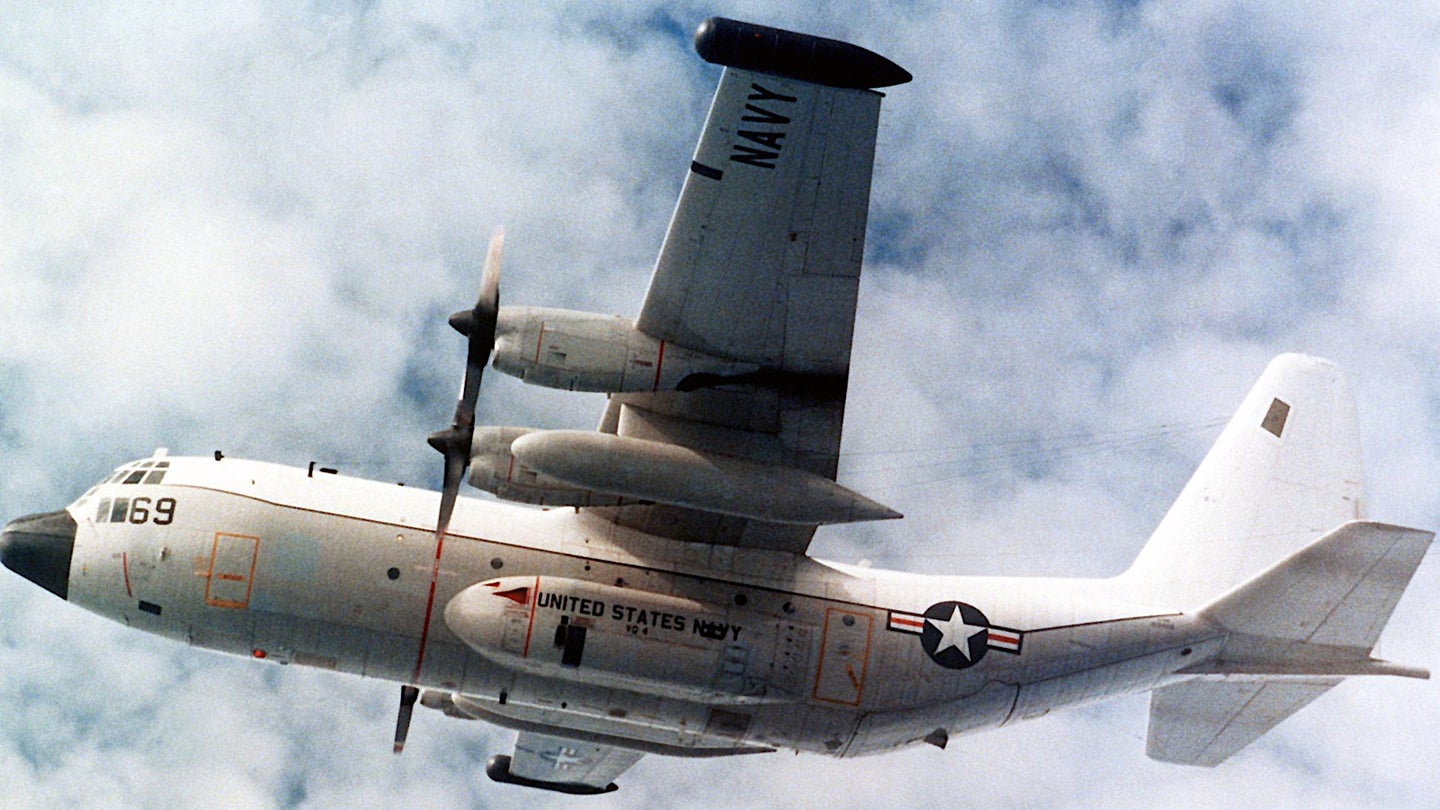
The U.S. Navy says it has determined that a modified C-130J-30 Hercules turboprop airlifter is the best available platform to provide airborne command and control support for America's nuclear deterrent forces, including relaying orders to carry out a nuclear strike or even remotely initiating the launch of intercontinental ballistic missiles from their silos. A fleet of E-6B Mercury jets, modified versions of the Boeing 707 airliner, that are commonly referred to as "doomsday planes," presently fulfill this mission. It's a role known as Take Charge and Move Out, or TACAMO. The E-6Bs had replaced an earlier EC-130Q aircraft just over 30 years ago.
Naval Air Systems Command (NAVAIR) revealed the results of its so-called "analysis of alternatives" in a notice it issued on Dec. 18, 2020. That posting on the U.S. government's official contracting website beta.SAM.gov also announced the service's intent to acquire up to three C-130J-30s for TACAMO test purposes via a sole-source deal with Lockheed Martin, the aircraft's manufacturer.

A Navy EC-130Q TACAMO aircraft.
"The Analysis of Alternatives (AoA) results indicated that the four-engine, militarized C-130J-30 is optimally configured aircraft for performing the TACAMO mission," the contracting notice said. "The characteristics of this airframe also maximize the operational deployability of the assets to austere environments."
"The C-130 is currently extensively fielded within the Department of Defense, and deployed at various bases that create operation, training and logistics support synergies for TACAMO execution," it continued. "Lockheed Martin already has an established domestic production line that has the ability to produce test units for PMA271 [NAVAIR's Airborne Strategic Command, Control and Communications Program office] that will enable acceleration of the risk reduction and subsequent engineering and manufacturing development test program."
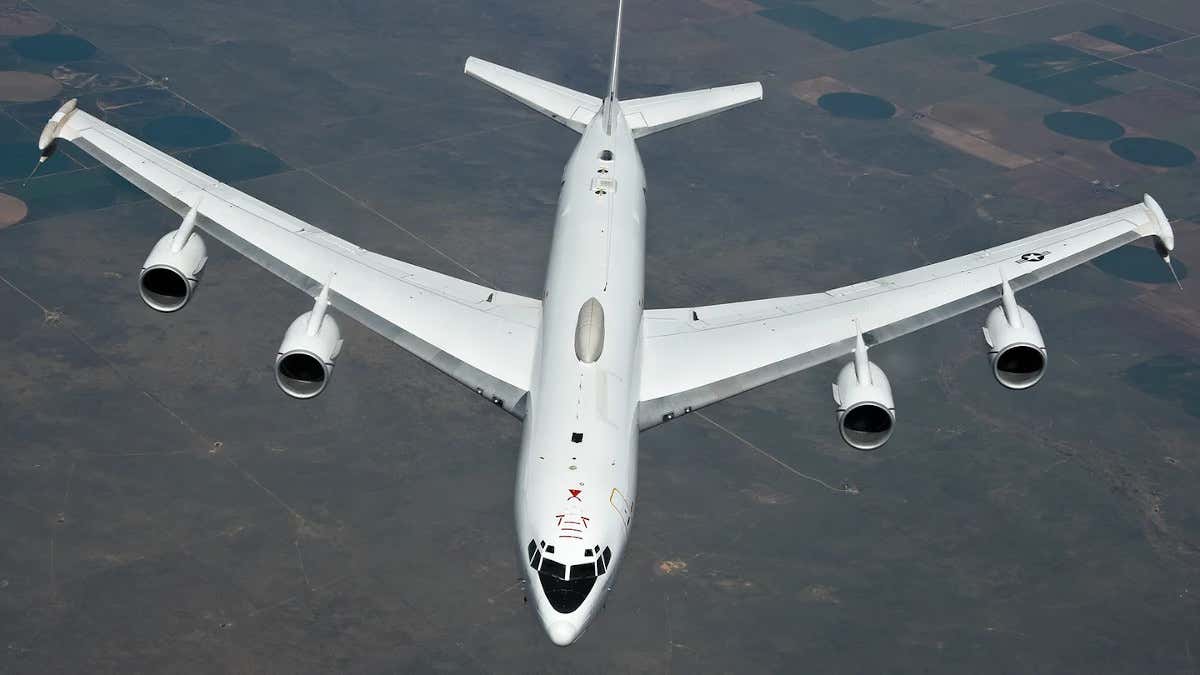
A US Navy E-6B Mercury aircraft, which presently performed the TACAMO mission.
The C-130J is the latest model in the famous Hercules family, a large number of variants of which certainly do remain in widespread service across the U.S. military. The Navy itself operates a relatively small fleet of older C-130T cargo planes, some of which have received eight-bladed NP2000 propellers and associated engine upgrades in recent years. There is also now the lone C-130J, nicknamed Fat Albert, assigned to the service's Flight Demonstration Squadron, better known as the Blue Angels.
The C-130J-30 is an extended length version of the standard C-130J that is 15 feet longer, overall. This increased "usable space (two more pallets of equipment) in the cargo compartment," according to the Lockheed Martin website.
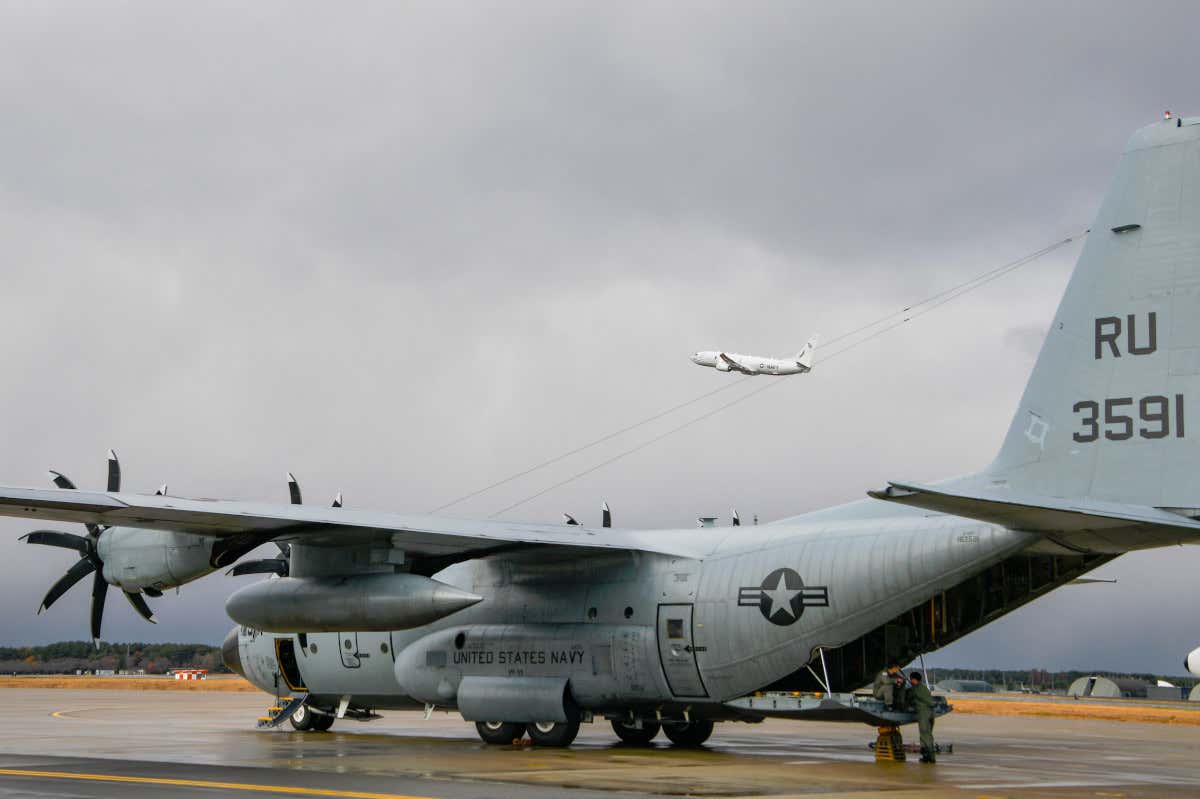
A US Navy C-130T with the NP2000 propellers.
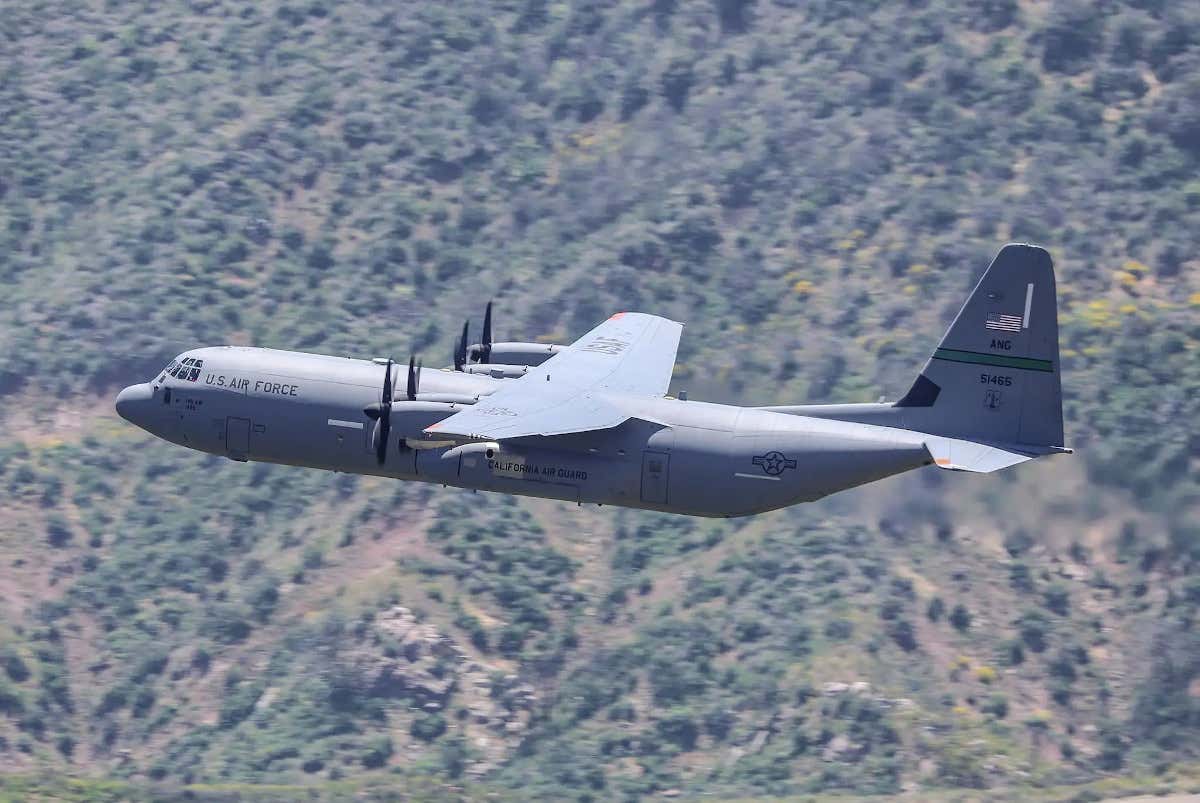
A C-130J-30 of the California Air National Guard.
For a TACAMO-configured aircraft, this would provide important additional space for the extensive suite of secure communications equipment that the aircraft would need to carry out that mission, which you can read about more in these past War Zone pieces. In addition, the added room would help with the installation of the extremely long Very Low Frequency (VLF) antenna necessary for communicating with submerged ballistic missile submarines.
These VLF antennas are essentially lengthy wires – just over five miles long in the case of the E-6B – that trail behind the aircraft. The plane then flies in a series of tight circles, causing the line to spiral down toward the surface for optimal performance. You can read more about how all this works in this previous War Zone story.
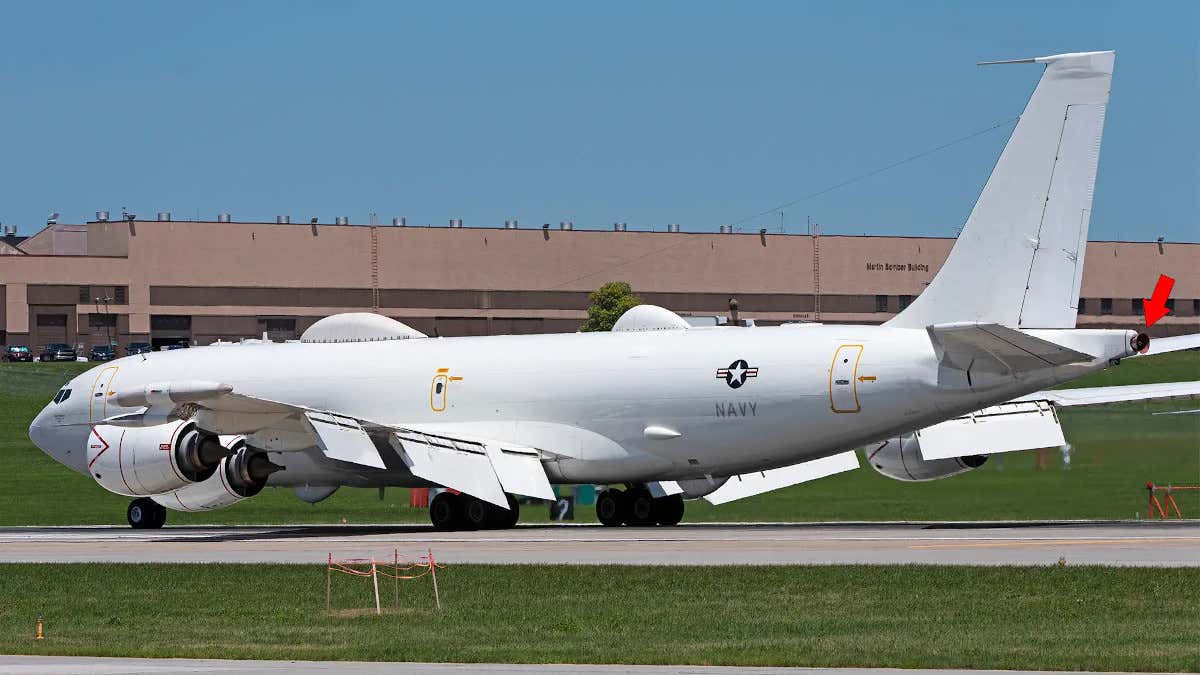
An annotated image showing an E-6B aircraft with a red arrow pointing to the drogue at the end of the aircraft's VLF antenna, which is seen here in its stowed position.
TACAMO is an absolutely vital mission for ensuring the credibility of America's nuclear deterrent. It is part of a larger command and control infrastructure designed to make sure the U.S. government can launch a massive nuclear retaliatory strike no matter what the circumstances, even in the event of a surprise attack.
It's perhaps not surprising on many levels that the Navy has determined that the C-130J-30 is the best available option for a new TACAMO aircraft. Since the first flight of the Hercules in 1954, the C-130 series has proven time and again to be an eminently adaptable platform. This has included various intelligence, surveillance, and reconnaissance types, multiple command post variants, and psychological warfare platforms, as well as the U.S. Air Force's famous AC-130 gunships. The spacious interior also makes it particularly well suited to the addition of roll-on/roll-off mission kits of various kinds, which you read more about in this War Zone piece.
The Navy's first four TACAMO aircraft, which entered service in 1963, were actually conversions of C-130 airlifters originally destined for the Air Force. The service had supplemented these EC-130Gs with an additional eight EC-130Q aircraft by the end of the decade. At that time, these aircraft were only intended to act as airborne command and control centers to support ballistic missile submarine operations.

A US Navy EC-130Q TACAMO aircraft. The red-colored drogue at the end of the aircraft's VLF antenna, which is in the stowed position, is visible at the rear of the plane.
In 1989, the Navy began replacing the remaining EC-130Qs with the E-6A Mercury. The service subsequently upgraded those aircraft to E-6B standard, at which time they also assumed the role of providing aerial command and control support for the Air Force's intercontinental ballistic missile (ICBM) and nuclear-armed bomber forces. Until 1998, the Air Force has flown its own EC-135C Airborne Command Post (ABNCP) aircraft, also known by the nickname Looking Glass, in this role.
It's certainly worth pointing out that the E-6Bs, conversions of what were some of the last and most modern 707 airliners built, were larger and higher performance platforms than the EC-130Qs. The C-130J-30 is certainly a more capable aircraft than the C-130H on which the EC-130Q was based, but it won't have the base speed and altitude capabilities of an airliner-sized multi-engine jet. Compared to the Mercuries, any TACAMO-configured C-130J-30 would not be able to get on station as quickly, or fly as high, limiting its ability to get above bad weather or establish a better line of sight for its communications systems.
At the same time, as the Navy itself has noted, the C-130J-30 platform does immediately open up the ability to use a larger number of air bases, airports, and airfields, including austere ones that the E-6B cannot operate from. This could be very useful in a contingency scenario where an opponent may have destroyed or otherwise rendered unusable many well-established bases, as well as larger secondary dispersal sites, which include large commercial airports. Being able to fly from smaller, tertiary locations could help to ensure that the TACAMO mission continues without significant disruption under such circumstances. This is also true during peacetime as targeting the TACAMOs on the ground would be much harder if they could easily operate from and sit alert at a much larger number of airports.
A C-130J-30 configured for the TACAMO mission would certainly have a mid-air refueling capability and the Hercules is already a platform that has demonstrated the ability to loiter over particular areas for long periods of time. Unlike the Boeing 707, the C-130J is still in production, as well, meaning that TACAMO aircraft based on this plane would be inherently easier to maintain and support logistically, and may also be easier to convert to this specialized configuration begin with. As time goes on, the J looks set to increasingly become the default base C-130 model across the U.S. military, as well. Compared to the long out of production 707-based E-6, support for the C-130J is already distributed across the U.S., and beyond. Training C-130J crews is even an easier proposition.
All told, crafting a new TACAMO aircraft based on the C-130J-30 to replace existing E-6Bs would trade a certain amount of performance for being more flexible, adaptable, sustainable, and readily maintainable. The C-130J's ability to loiter for long periods of time and the robustness of its airframe will also come in handy.
It's also interesting to note that the Air Force, in cooperation with the Navy, had explored the potential of acquiring a single aircraft, or at least a common base aircraft, to perform the missions of the E-6B, as well as the Boeing 747-based E-4B Nightwatch National Airborne Operations Center (NAOC) and the Boeing 757-based C-32A Air Force Two executive transport aircraft. That program had been known as NEAT, a nested acronym combining NAOC, Executive Airlift, ABNCP, and TACAMO.
The NEAT effort appears to have been shelved last year and the Air Force subsequently announced the Survivable Airborne Operations Center (SAOC) program. SAOC is seeking a replacement only for the E-4Bs, rather than some sort of common plane that could also take over for the E-6B and the C-32A. It is still possible that this service could choose a smaller platform for the SAOC than the 747, which might also be a suitable C-32A replacement—the already militarized KC-46 seems would seem like a no-brainer—but a C-130 variant would not be sufficient in either of these roles.
It's not clear how committed the Navy is to a C-130J-30-based TACAMO aircraft, either. The service only expects to begin receiving the modified Hercules aircraft for testing between Fiscal Years 2022 and 2023. The E-6Bs are presently scheduled to fly until at least 2038. It's certainly possible that the eventual TACAMO force could include a mixture of platforms.
No matter what, it's certainly interesting to see the Navy moving toward a TACAMO platform based on a C-130 variant just over three decades after retiring its EC-130Qs that served in a similar role.

The Navy's Wants To Go Back To Flying The C-130 Hercules As Its Next Doomsday Plane
The Navy replaced a fleet of C-130s configured to support nuclear deterrent operations with jet-powered aircraft just over three decades ago.


